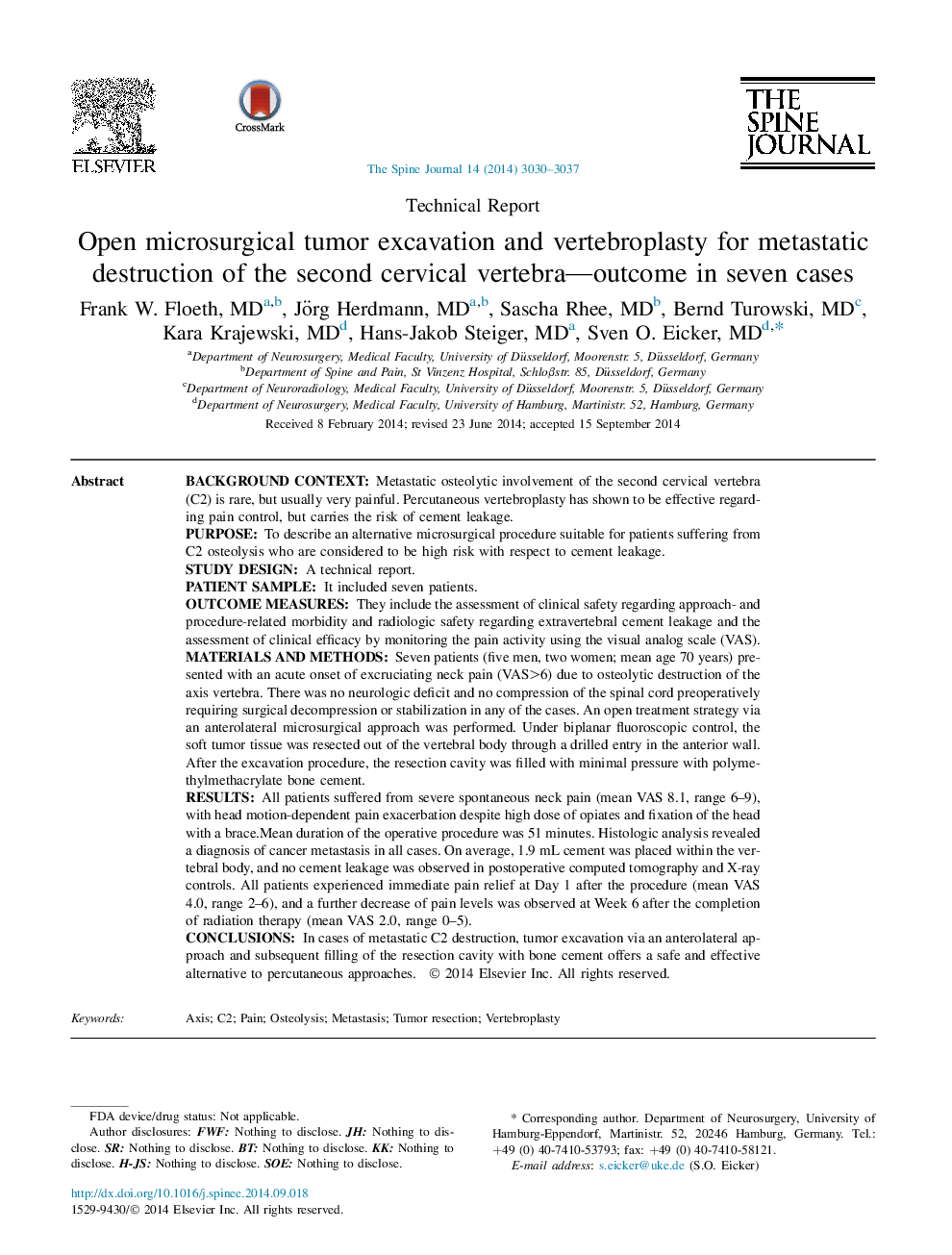| Article ID | Journal | Published Year | Pages | File Type |
|---|---|---|---|---|
| 4096192 | The Spine Journal | 2014 | 8 Pages |
Background contextMetastatic osteolytic involvement of the second cervical vertebra (C2) is rare, but usually very painful. Percutaneous vertebroplasty has shown to be effective regarding pain control, but carries the risk of cement leakage.PurposeTo describe an alternative microsurgical procedure suitable for patients suffering from C2 osteolysis who are considered to be high risk with respect to cement leakage.Study designA technical report.Patient sampleIt included seven patients.Outcome measuresThey include the assessment of clinical safety regarding approach- and procedure-related morbidity and radiologic safety regarding extravertebral cement leakage and the assessment of clinical efficacy by monitoring the pain activity using the visual analog scale (VAS).Materials and methodsSeven patients (five men, two women; mean age 70 years) presented with an acute onset of excruciating neck pain (VAS>6) due to osteolytic destruction of the axis vertebra. There was no neurologic deficit and no compression of the spinal cord preoperatively requiring surgical decompression or stabilization in any of the cases. An open treatment strategy via an anterolateral microsurgical approach was performed. Under biplanar fluoroscopic control, the soft tumor tissue was resected out of the vertebral body through a drilled entry in the anterior wall. After the excavation procedure, the resection cavity was filled with minimal pressure with polymethylmethacrylate bone cement.ResultsAll patients suffered from severe spontaneous neck pain (mean VAS 8.1, range 6–9), with head motion-dependent pain exacerbation despite high dose of opiates and fixation of the head with a brace.Mean duration of the operative procedure was 51 minutes. Histologic analysis revealed a diagnosis of cancer metastasis in all cases. On average, 1.9 mL cement was placed within the vertebral body, and no cement leakage was observed in postoperative computed tomography and X-ray controls. All patients experienced immediate pain relief at Day 1 after the procedure (mean VAS 4.0, range 2–6), and a further decrease of pain levels was observed at Week 6 after the completion of radiation therapy (mean VAS 2.0, range 0–5).ConclusionsIn cases of metastatic C2 destruction, tumor excavation via an anterolateral approach and subsequent filling of the resection cavity with bone cement offers a safe and effective alternative to percutaneous approaches.
